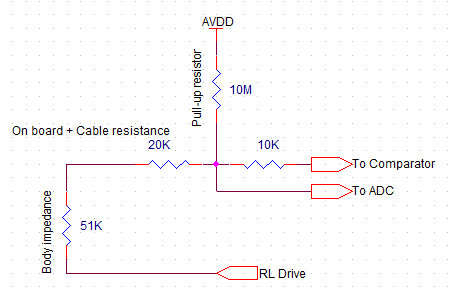Dear All,
I am a little confused about the lead-off detection schemes of ADS1298. My understanding of enabling lead-off detection is as given below. Please correct me if I am wrong.
- Enable Lead-off detection by settings Bits[1:0] of LOFF register to 01(AC mode) or 11(DC mode)
- Set detection mode to pull-up or current source more byte setting Bit4 of LOFF register.
- If current source mode is selected, set the current by setting Bits[3:2] of LOFF appropriately.
Is current source mode or pull-up/down mode applicable only when using DC lead-off detection?
I understand that in AC mode (pull-up or current source config), a signal of Fdr/4 is injected into the lead and the presence of the same is checked at the output to see if the lead is intact. Now in AC mode, does ADS1298 update the lead-off status register by itself or do I need to put frequency detection code in my software to check for the presence of lead-off excitation signal? If it sets the registers by itself, what is the criterion for setting the comparator thresholds?
Secondly when using AC mode, does any inverted excitation signal need be given to RL electrode external to ADS1298, or does ADS1298 does that by itself? If neither how does the signal vary when the electrodes are in place and removed?


